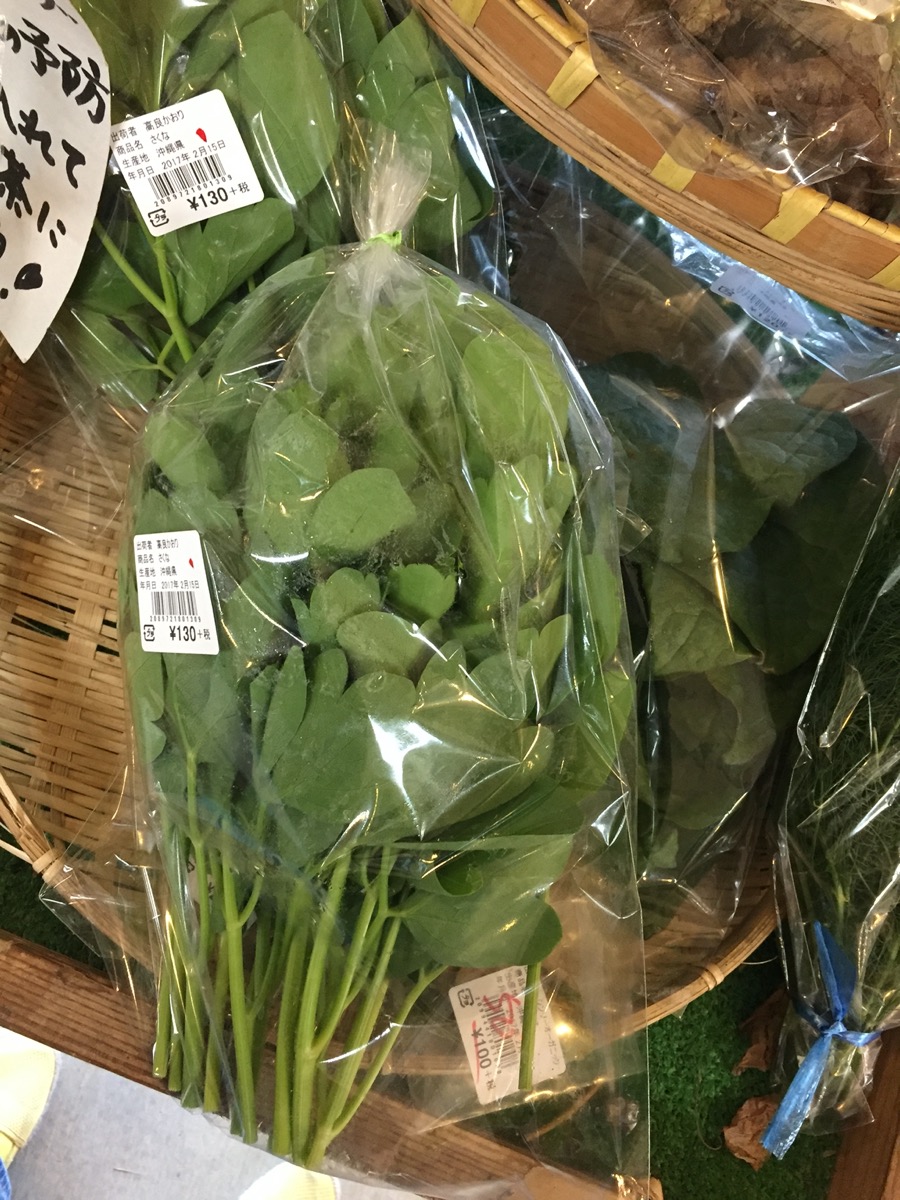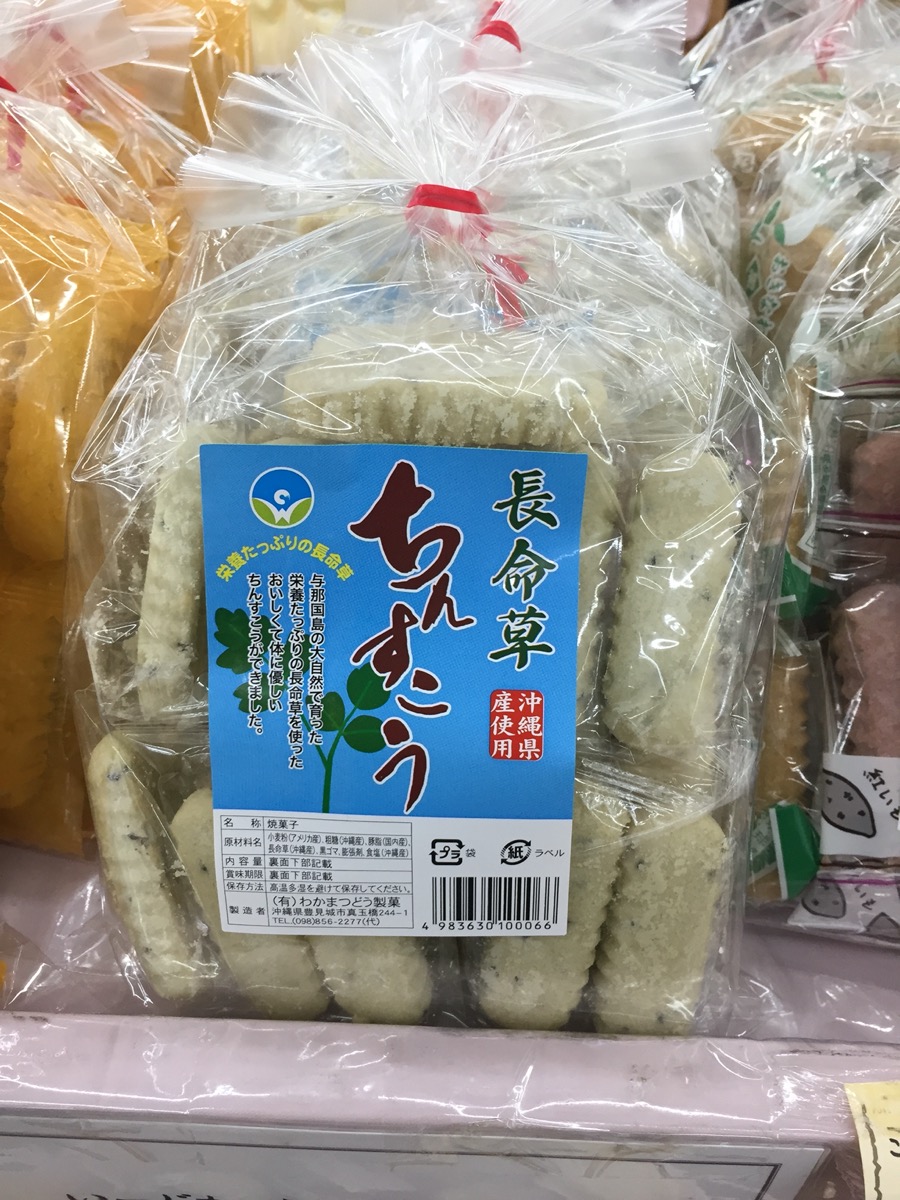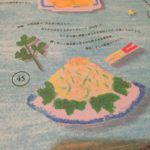This showcases Okinawa grandma’s cooking. Below is a simple Okinawan recipe which includes tofu, peanut butter, miso, some type of leafy green of your choosing, as well as canned tuna (optional). It might sound strange, but is quite delicious.
白和え shira-ae is basically a Japanese “salad” dressed with tofu and white miso; in Okinawa, usually island peanuts are included as well. It is a type of 和え物 aemono, which just means “dressed salad” dish.
サクナ sakuna, the Okinawan name, is better known by its Japanese name, choumeisou 長命草 (also pronounced botanboufu, so I am not sure which is more common), which basically means something like long-life grass or herb; it is known for its herbal medicinal properties and is supposed to be very healthy for you. It grows in the wild on the rock outcroppings of Yonaguni-jima in the Okinawa prefecture. Choumeisou contains abundant polyphenols to prevent arteriosclerosis, cancer, blood cholesterol and high blood pressure. The plant grows on wave-battered, sun-drenched cliffs exposed to the salty ocean air; the hardiness of the plant to survive such a harsh environment is astounding and it has long been a favorite of people as longevity food. The scientific name is Peucedanum japonicum; I have seen it used in diet/health drinks and smoothies. The herb, as well as products made from the leaves, is easily available in Okinawa.

Anyway, I recently found a really interesting periodical, “ritokei,” about the islands of Japan, with a fold-out sections talking about “mama’s island homemade cooking” with featured dishes around the many islands. Today I will introduce a dish from Yonaguni-jima made from sakuna and island tofu, called サクナの和えもの (sakuna no aemono). Aemono basically just means “seasoned/dressed dish” and in this case, it is referring to shira-ae 白和え, so with tofu and white miso. I suppose you could also call this dish sakuna no shira-ae サクナの白和え.
サクナ(長命草)の和えもの Sakuna no Aemono:
sakuna (choumeisou 長命草), as much as desired– washed and shredded
island tofu (shima-doufu 島豆腐), 1/2 block– drained, “mashed” or crumbled
roasted sesame, 3 tbsp
white miso 1 tbsp
sugar, a pinch
peanut butter, small amount to taste
Grind sesame with mortar. Next add in miso, sugar, island tofu, peanut butter and mix. Add shredded sakuna, mix well.
Optionally, you can add a little canned tuna. Another option could be to add a tablespoon of dashi if you prefer a bit of fish flavor. Or if you wanted to go all out Okinawan, a third option is to add some mimigaa ミミガー, which is thinly cut boiled pig’s ear sold in supermarkets everywhere here. Not my cup of tea since I do not eat pork, but some people really enjoy mimigaa. There are many variations on this dish, so don’t be afraid to experiment a bit. You can even use a darker miso, just keep in mind, it will make the dish a bit saltier and more pungent, changing the flavor a bit.
Sakuna is fairly common to find here in Okinawa, but you can even use other green leafy vegetables in addition to or instead of sakuna; nigana and handama are also popular in Okinawa, or if you cannot find this, just regular spinach will work as well. You could blanch the leaves in boiling water quickly (~1 minute or less) to get them soft, especially if you decide to try this type of recipe with a more hardy leafy green, such as komatsuna, karashina or other mustard greens.
This is a very simple, yet healthful and flavorful dish, to give you the feeling of Okinawan mother’s home-cooking.
If you enjoyed this, try the second in the series, a special dish from Ojiki-jima in Nagasaki prefecture.
BONUS: Oddly enough, I saw these sakuna-flavored chinsukou cookies the other day at one of the farmers markets. Somehow I doubt these will help extend your life, though…

**For anyone who was directed here looking for more info on “Bizarre Foods in Okinawa,” I have created a special post: here.



6 thoughts on “Yonaguni-jima recipe: Sakuna shiraae サクナの白和え”
Comments are closed.